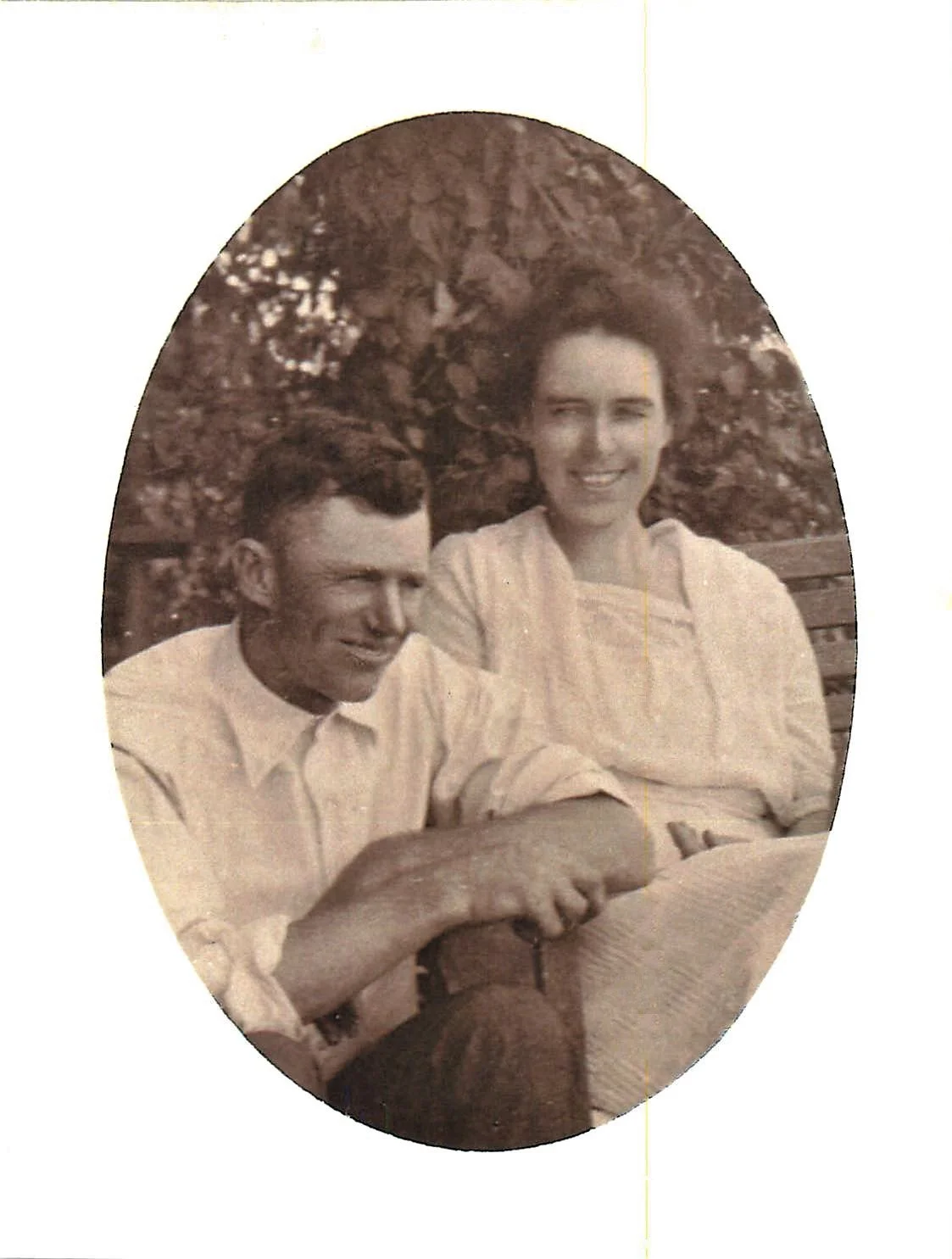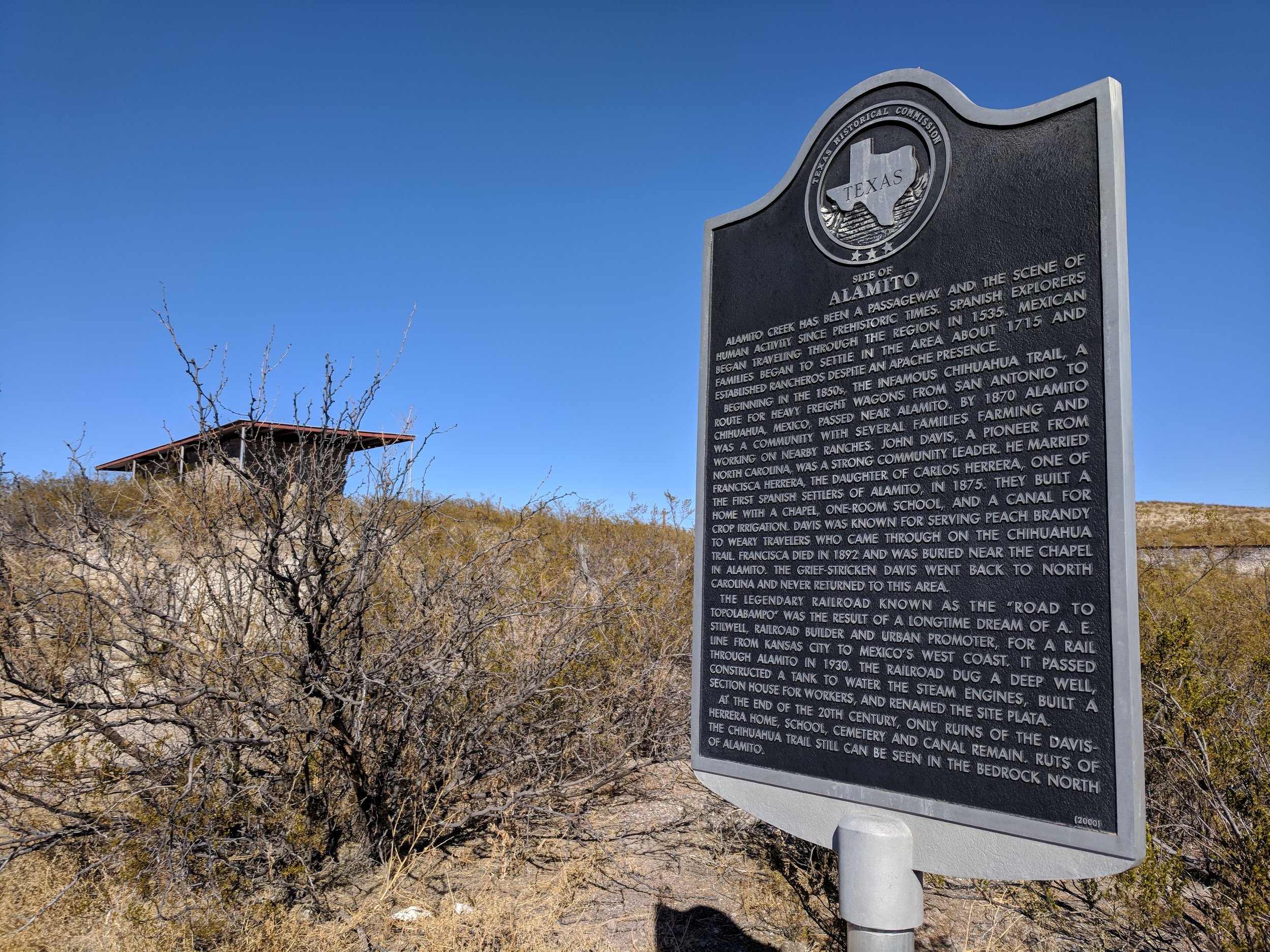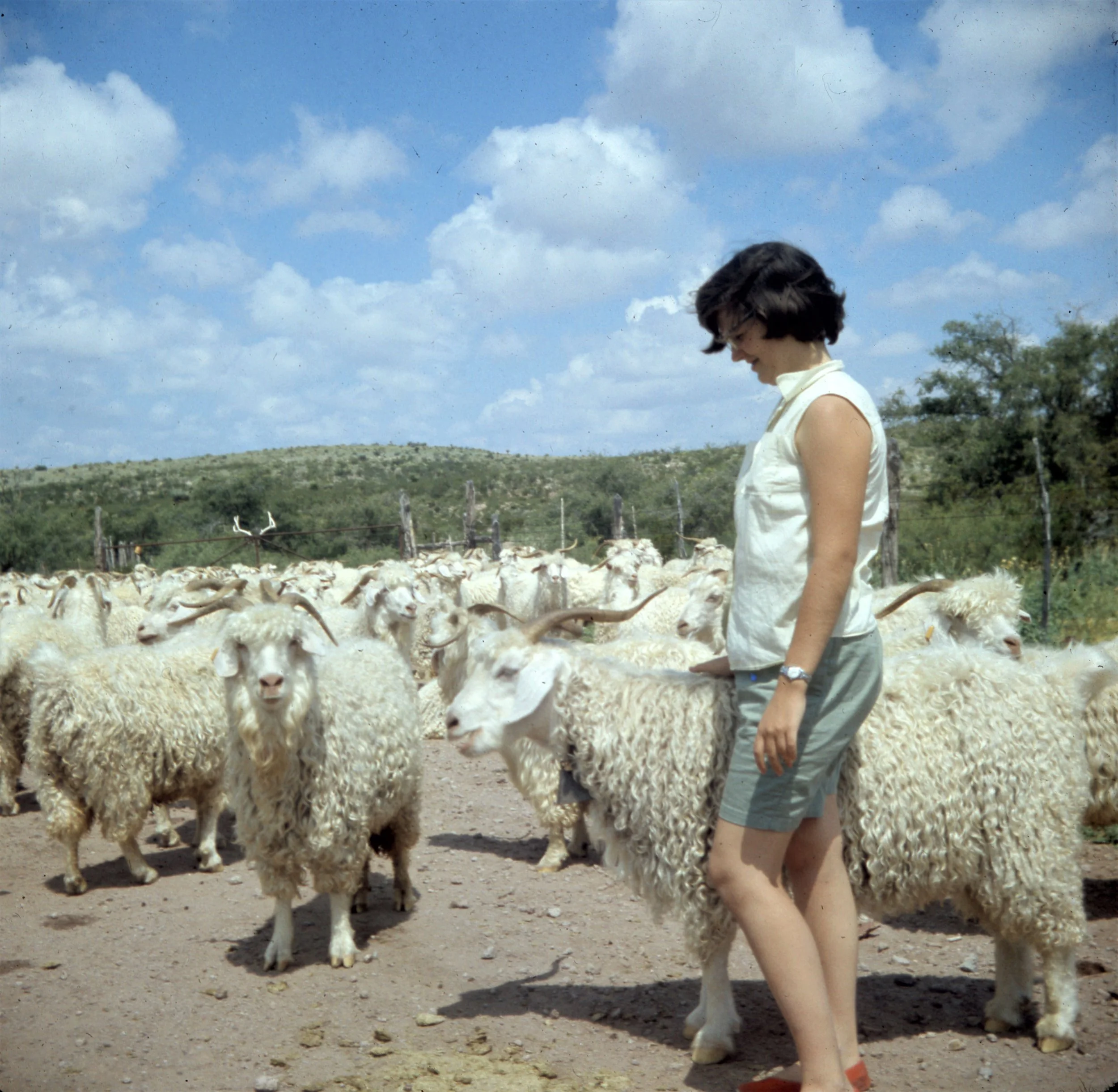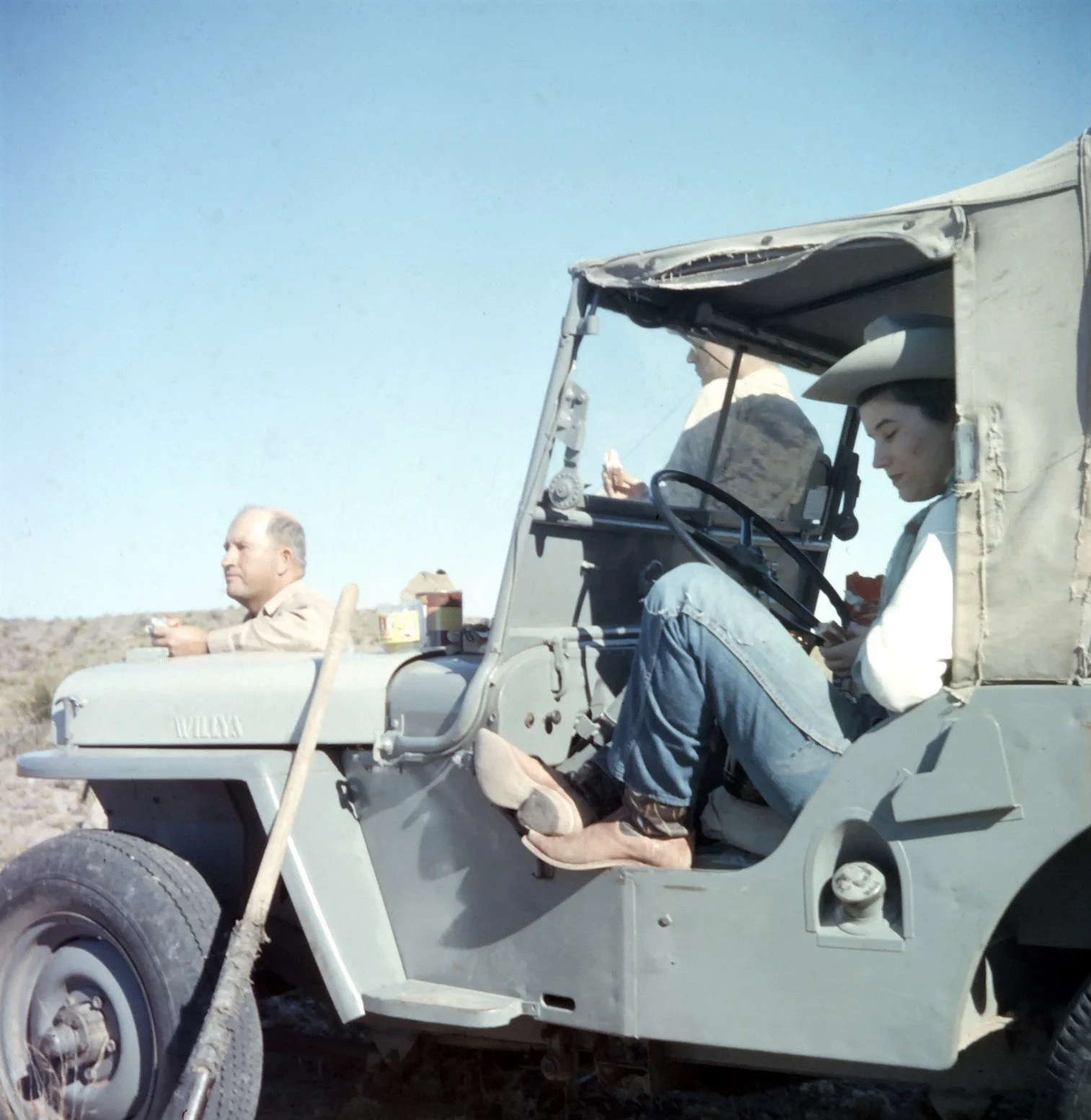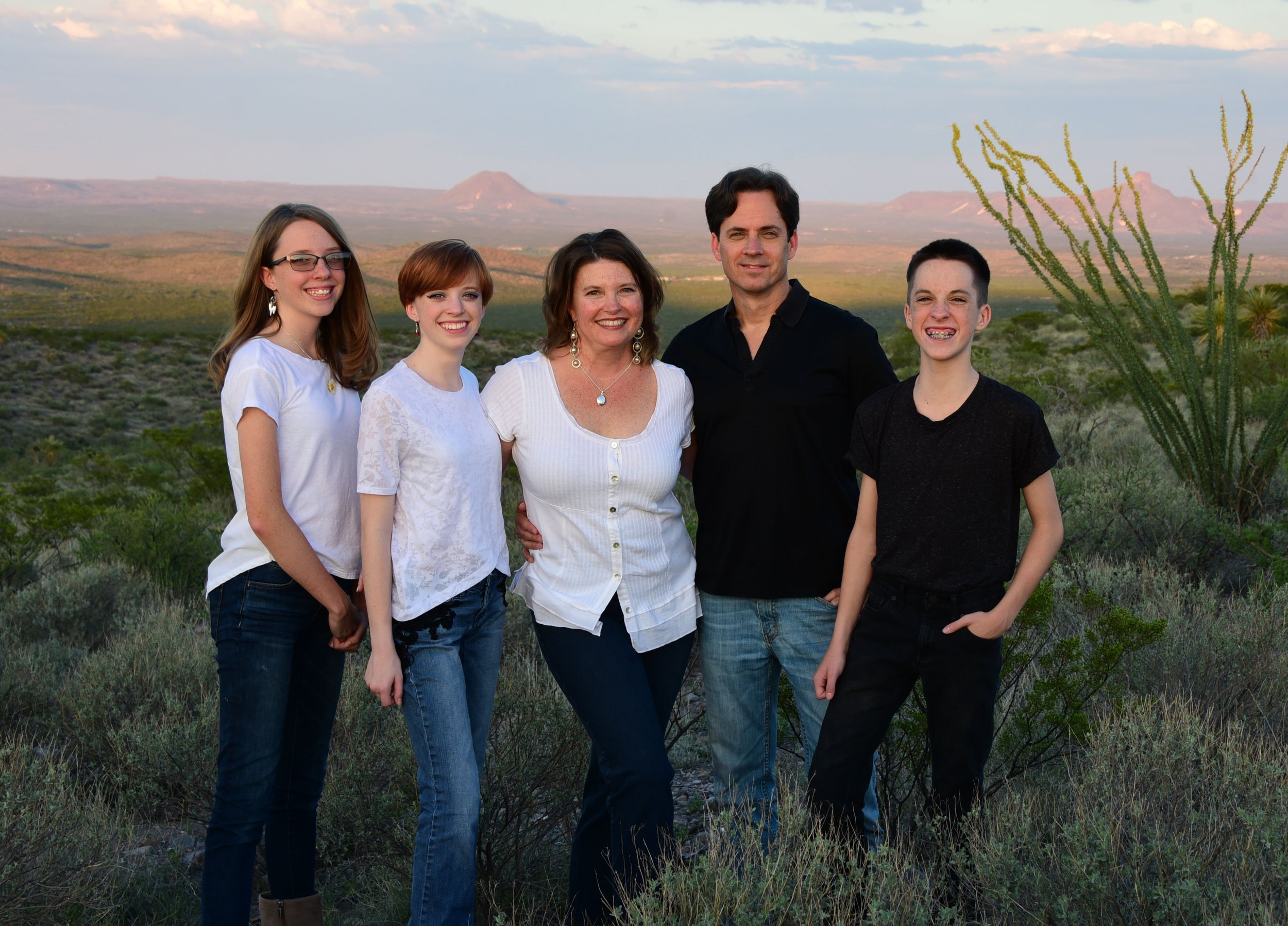
History of B2 Rock House and White House Ranch
Milton and Etta Baugh
HISTORY OF B2 ROCK HOUSE AND WHITE HOUSE RANCH
I am a fourth-generation owner (and the third-generation woman owner), of the B2 Rock House Ranch, which includes the White House. The White House itself was built by then-Marfa postmaster, Ware Hoard, on his ranch around 1887. The Hoard ranch covered everything from the Alamito settlement to the ranch owned by Milton Faver (or the Greenwoods, by that time). The location for the house was chosen because of its proximity to a natural spring that still exists west of the house, and the Alamito Settlement to the east. The Davis family had built the large casita, chapel, and school at Alamito in 1875. This was the backbone of the small farming community there, and a resting point for travelers along the Chihuahua Trail which crossed the settlement on the north side. The teacher for the Alamito school lived with the Hoards, in the middle bedroom of the house. Teachers and ministers commonly lived with families who could offer them room and board in exchange for their work in the community. She rode a horse named King to school and back each day, and taught the children of the farmers and workers. The remains of the school are still visible, alongside the historical marker on Hwy 169, and paintings in the Alamito Room of the White House show the house and school as they stood in the 1950s.
Baugh Children
My family began exploring property here in the late 1930s, shortly after the railroad was built. Brothers Milton and Aubrey Baugh wanted to expand their ranching into the Trans Pecos region. They and their father, George Baugh, owned one of the largest ranching concerns in Schleicher County, Texas. Around that time, they had 2500 Rambouillet sheep, 550 Hereford cattle, and some 200 goats on the Scheicher County ranches. Aubrey Baugh bought the White House property from the Hoards in 1945 and lived in the house after the war with his wife, Elizabeth, and step-daughter, Mary, whom he adopted. They ran sheep and cattle on the ranch. They had no other children. His brother Milton, continued to spend most of his time in Schleicher County and sent a ranch manager out to the Big Bend. Milton and his wife Etta DeBerry had four children, including my grandmother, Mary Etta Baugh (“Winnie”). Her siblings were Milton Jr. (known as Bill), Betty, and Albert “Adair” Baugh. In the photograph, Winnie is the little girl wearing a great big bow.
Bill Baugh (Milton Jr) 1940
Bill Baugh and guest 1940
In 1954, Elizabeth Baugh did a substantial remodel of the White House (which was only three or four rooms when they bought it). Much of the current tile in the house, along with the dining room light fixture, and the outdoor table, dates to that time. Elizabeth turned it into a showcase home in Presidio County. There were no electrical providers at that time, so the house was “off-grid”, with an engine room (a separate building out back) housing a gas-fed generator, and a wind charger supplying electricity. The wind charger was a single-blade turbine.
Milton and Etta Baugh’s children bought surrounding land, eventually bringing the total size of the Baugh Ranches to around 72 sections of land in Presidio County. Their youngest, Bill, married his cousin Mary Baugh (the adopted daughter of Aubrey and Elizabeth), thus keeping Aubrey’s line in the ranching business. The family raised cattle, Angora goats, and a few sheep, but the drought of the 1950s made ranching difficult. The land was not suited for sheep, and the market for Mohair (the wool from Angora goats) collapsed at the same time that the drought hit. Aubrey Baugh was forced to sell his portion of the ranch land, which included the White House, to his brother Milton in 1960. When Milton later passed away, he divided the ranch holdings (including those in Schleicher county) among his surviving children (Bill died in 1959, and his wife and children had sold their portion of the land and moved to town). His surviving son, Adair, inherited the ranch in Schleicher County. Only the Baugh sisters remained in the Big Bend. His eldest daughter, Betty Baugh Van Eman, inherited “the low country”, including the White House, because it abutted land she and her husband had already purchased along the creek and further east. Winnie inherited “the high country” west side of the ranch, and she and her husband Jack Brown had already added acreage to the far east side of the family property. The two Baugh sisters were well-educated, with degrees from the University of Texas, in business and journalism. Betty was a journalist and wrote the social column for the Big Bend Sentinel newspaper. Her typewriter is still at the White House.
Leighton, Judith, and Betsy Brown with my mother Marjo Etta Brown
Alamito Ruins
Mother with goats in 1950s
Betty and her husband Van had three children but lost one (Louis) early at the ranch when he was kicked by a horse at age 3. They struggled to make a living ranching, and lost a second child (Debby) several years later, at age 14, to a car wreck on Hwy 169. Their oldest son (Charles), who had been driving, walked miles across country at night with a broken arm to reach the White House. Theirs was a time of hardship, and they lost their portion of the ranch to a property tax sale in 1968. It was gone from the family for about two decades.
Only Jack and Winnie (Baugh) Brown remained at the ranch. They had four children of their own, including my mother, Marjo Etta Brown. She is the youngest of the four, shown on the end of the photo of her and her siblings, Leighton, Judith, and Betsy Brown.
Jack Brown bought back the White House Ranch in the 1980s, and later the creek pasture that includes the remains of the Alamito Settlement. After Winnie’s death in 1995, Jack worked with Sul Ross State University and then-congressman Pete Gallego to have the settlement declared a state historic site. Its history is linked to the White House.
Aunt Betsy and her dad Jack, resting from fence work in 1950s.
On Jack’s passing, the ranch was inherited by my mother, Marjo Brown Skiles, and she ran the cattle company with her sister Betsy Brown. In recent years, ownership of the ranch has passed to me.
As the women in the family held on to the ranch, the names have changed, but our love of the land has remained.
The Ferguson family today
I lived in the White House with my husband, Roy Ferguson, for seven years, but moved into town once our children were old enough to begin attending school.
The White House has been home to our family members, and to ranch managers and their families, for many years. The goats and sheep are long gone, but we continue cattle ranching operations at the ranch, and in 2022, we began sharing this extraordinary home with guests who come to visit Marfa and the Big Bend Region.

